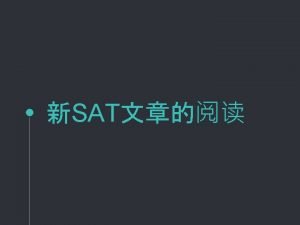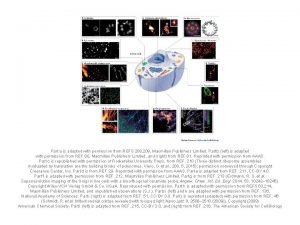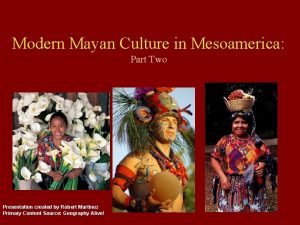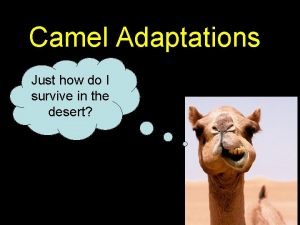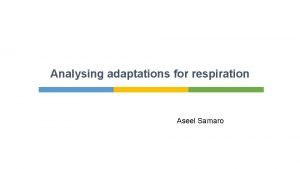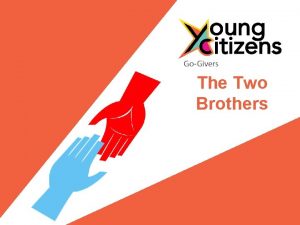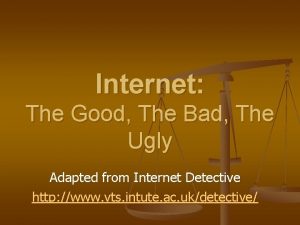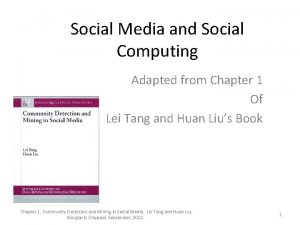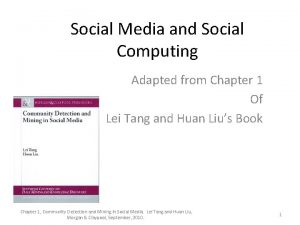What is Social Computing Adapted from a deck
















- Slides: 16

What is Social Computing? Adapted from a deck by Dr. Bonnie Mac. Kay

Before We Begin… • Start the computer nearest to you • Boot into Mac OS X • We will use the computers later in the lecture

Today's Questions • Why study social computing? • What technological components constitute social computing? • What sociological components constitute social computing? • What are some types of social computing apps? • What is social computing?

Why Study Social Computing? Because we take cues from communities and individuals instead of organizations – E. g. , viral marketing, reviews, opinions, etc. – Around 120, 000 hits on Google in just four days (~30, 000 references per day, without much or any traditional media expenditure)

Why Study Social Computing? • Because we can collaborate to solve large problems or build large systems E. g. , open source, penetration of closed regimes • Because we can access lots of social data E. g. , data mining of Facebook • Because we can build socially compelling and important systems E. g. , government transparency, Wikipedia

Technological Components of Social Computing • Computers (1 or more) • Network • Software that facilitates – Interaction – Networking (social) – Collaboration – Publication – Immersion and interaction E. g. , Second Life

Sociological Components of Social Computing • People with access to the technology E. g. , computers, cell phones • Focus, task, goal, or purpose E. g. , building software, political protest, keeping touch with friends, entertainment

Sociological Components of Social Computing Model of the interactions and behaviours – E. g. , small world networks, critical mass, Zipf (heavy tail) distributions – E. g. Bookmarking – Often derived post-facto

Social Computing Applications Characterised by: – The software that implements a particular functionality E. g. , Social Networking (Facebook), Micro-blogging (Twitter), Media Distribution (You. Tube) – How the software is used E. g. , Political organization, digital journalism, advertisement

Characterizations of Social Computing Applications • Are based on common uses • Can overlap (many apps are multipurpose) E. g. , Second Life (virtual world, classes, sales, etc. ) • Are independent of technology • Can depend on the audience of the app

Types of Social Computing Category of Social Comp. App. Example Blogging and Micro Blogging Twitter Social Networking Facebook Professional Networking Linked. In Media Exchange You. Tube Bookmarking and Tagging Delicious Collaboration Wiki Knowledge Exchange Stack. Overflow Informational Wikipedia Recommender and Reputation E-bay Gaming and Virtual Reality Second Life Physical (local) Device Interaction Microsoft Surface

Class Activity • Get in groups, find a computer (you can use a laptop if you wish), log in • Each group will be assigned one of the categories from the table • You have 12 minutes to find (using the Web) 5 different SCAs that fit into the same category • List a couple reasons why you believe these SCAs are all the same type • You will have 3 minutes to present your list to the class

Questions to Ask • What are the SCAs used for? • Are there many purposes? • What are the common features? • What are the common uses? • Who is their audience? • What differentiates the SCAs? • Which is the preferred SCA? By Whom? Why? Category of Social Comp. App. Example Blogging and Micro Blogging Twitter Social Networking Facebook Professional Networking Linked. In Media Exchange You. Tube Bookmarking and Tagging Delicious Collaboration Wiki Knowledge Exchange Stack. Overflow Informational Wikipedia Recommender and Reputation E-bay Gaming and Virtual Reality Second Life Physical (local) Device Interaction Microsoft Surface

Observations on Social Computing • Comprises technological & sociological components • Requires technology but is independent of technology • Characterized by the software and how it is used • Social Computing Applications – Typically have a large and diverse user bases – Rely on interactions between people to be of use – Rely on network effects (the actions of one user are of benefit others, e. g. , reviews, blogs)

What is Social Computing? • Can we combine these observations into a definition of Social Computing? • Do all the apps we considered fit the definition? • Are there applications that are not social computing applications but fall under the definition? • Is Social Computing the same as Web 2. 0?

Some Definitions of Social Computing • ‘…any type of computing application in which software serves as an intermediary or a focus for a social relation’ – D. Schuler, “Social Computing”, CACM, 37(1) 1994. • ‘A social structure in which technology puts power in individuals and communities, not institutions’ – C. Charron, J. Favier, and C. Li, “Social Computing: How Networks Erode Institutional Power, and What to Do about It”, Forrester Customer Report, 2006. • ‘Computational facilitation of social studies and human social dynamics as well as the design and use of information and communication technologies that consider social context’ – F. -Y. Wang, D. Zeng, K. Carley, W. Mao, “Social Computing: From Social Informatics to Social Intelligence”, IEEE Intelligent Systems, 2, 2007.
 Deck deck deck
Deck deck deck Social impact pitch deck
Social impact pitch deck Conventional computing and intelligent computing
Conventional computing and intelligent computing This passage is adapted from jane austen
This passage is adapted from jane austen Erythroposis
Erythroposis Adapted with permission from
Adapted with permission from In what ways have the highland maya adapted to modern life?
In what ways have the highland maya adapted to modern life? Xerophytes
Xerophytes Chaparral biomass
Chaparral biomass Mensajes subliminales camel
Mensajes subliminales camel Sausage shaped organelles
Sausage shaped organelles Best brother quotes
Best brother quotes Adapted from the internet
Adapted from the internet Gallant
Gallant How have plants adapted to the rainforest
How have plants adapted to the rainforest Spermopsida plants
Spermopsida plants The outsiders adapted for struggling readers
The outsiders adapted for struggling readers



